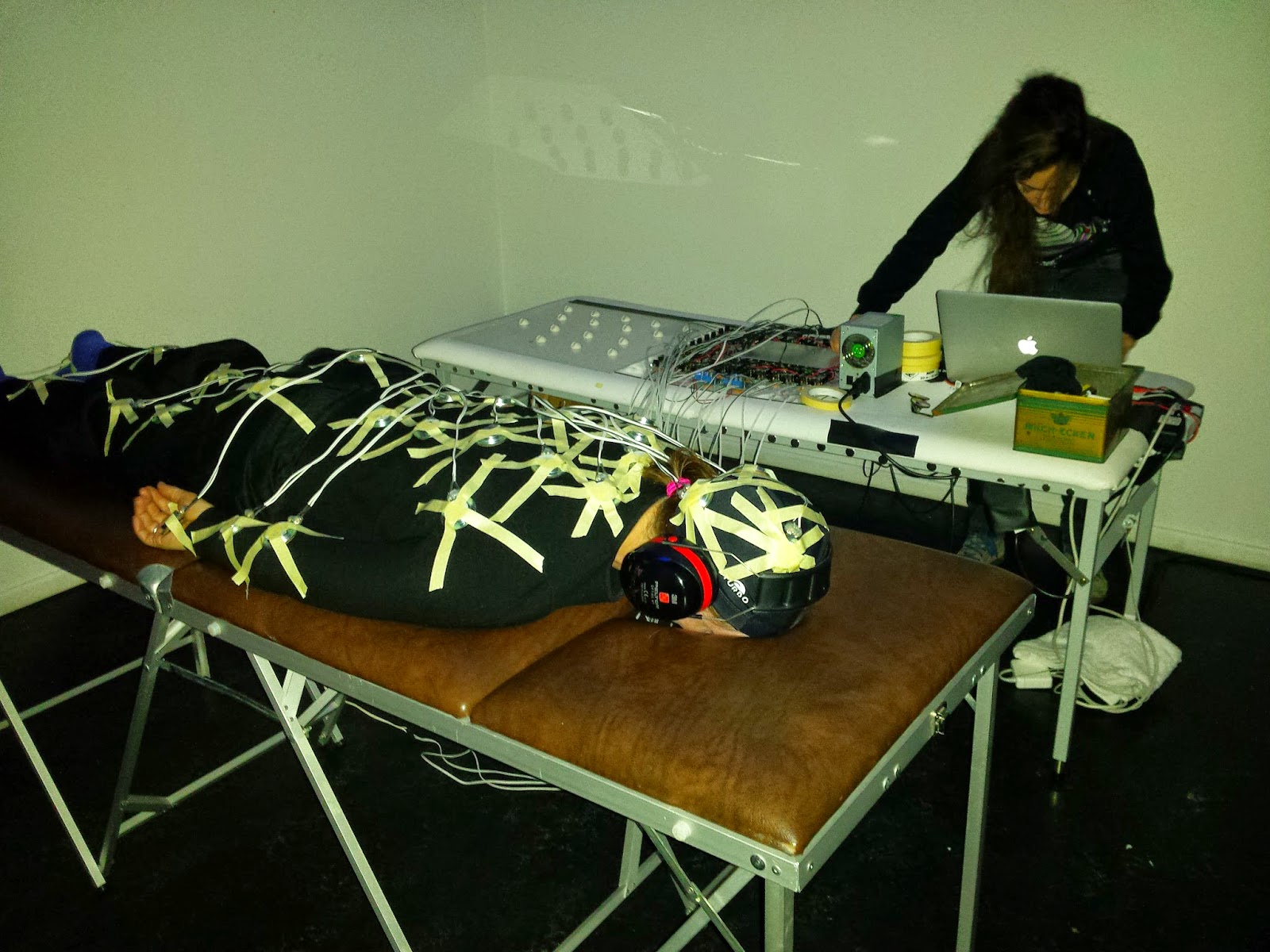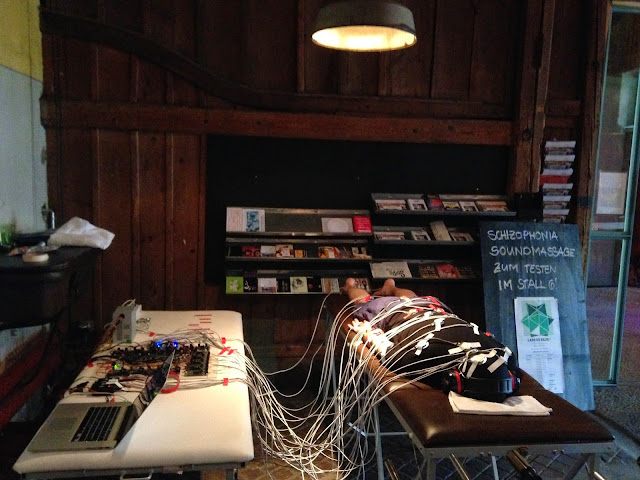Newspaper Aftenposten about the internment camp, 1945
(German version below)
The theatre installation Tyskerjenter premiered in 2008 on the Island Hovedøya in the Oslo fjord, where an internment camp for so-called ‘tyskertøs’ was situated after the 2nd World War. 'Tyskertøs' ("German sluts) were women who had intimate relations with German soldiers during the occupation. In the camp the inmates were tested for venereal disease, intelligence and mental disorders. “Could she inherit severe psychological defects to her offspring?” is one the archived questions of a doctors’ questionnaire of the camp.
The place itself keeps silent. Grass has grown over the place where the barracks used to be. Tyskerjenter explores the void in the archive, what is stored and what is erased in the memory.
In Tyskerjenter the visitor walks through the installation room like through a brain. Like memories traces of the past are fragmented in the space. The audience member himself becomes the ‘memorizer’ connecting the information. He is physically confronted with a disturbing incoherence that manifests itself in the space.
Performance setting is Lindøysundmagasinet on Hovedøya, a building used as storage for explosives and later for files of the 2nd world war.
Texts stored in archives is used as text material: statistics of the camp, police reports, intelligence tests and a Norwegian language guide of a Wehrmacht-soldier.
The project was kindly supported by Norsk Kulturråd, Goethe Institut, Fond for lyd og bilde, FFUK and Fritt Ord.
Involved artists:
Concept, realization, dramaturgy: VOLUMEN EXPRESS and friends, Veronika Bökelmann, Séverine Urwyler Concept consulting: Anett Vietzke. Dramaturgical consulting: Demian Marco Vitanza, Camilla Eeg. Performer: Elisabet Hagi Aars, Zoé Alibert, Fernanda Branco, Anders Høgli, Christina Nikolaisen, Anne Synnøve Skogstad, Anne Storberget, Demian Marco Vitanza. Choreografy: Zoé Alibert. Voice: Huy le Vo. Sounddesign: Per Platou. Lightdesign: Susanne Irene Fjørtoft. Stage design assistance: Morten Haugmo, Daniel Schütz. Video documentation: Anett Vietzke. Foto documentation: John Hugh. Videoanimation: Ignas Krunglevicius. Fotos for Karaoke-video: Dieter Bökelmann. Flyer / Poster: Dominik Huber, Tobias Spichtig. Production: Stefan Stave, Last Ink Company
German version:
TYSKERJENTER – Deutschenflittchen
Theaterinstallation auf der Insel Hovedøya im Oslofjord, Norwegen, August 2008
Tyskerjenter untersucht die Lücke, das Archiv, die Erinne-rung. Auf der Insel Hovedøya im Oslofjord wurden 1945-46 Norwegische Frauen in einem Lager interniert, die intime Beziehungen mit Wehrmachtssoldaten hatten. “Hier nützt es nichts, blauäugig zu sein,” schreibt die Zeitung Aftenposten 1945 über das Lager. Insassinnen wurden dort ärztlich untersucht auf Geschlechtskrankheiten, Intelligenz und Zurechnungsfähigkeit.
“ Meinen sie, dass aussergewöhnliche seelische oder körperliche Mängel an mögliche Nachkommen vererbt werden können?” heisst es im Ärztefragenbogen. Der Ort selbst schweigt. Gras ist über die Stelle gewachsen, wo einst Lagergebäude standen.
Der Zuschauer geht durch den Installationsraum wie durch ein Gehirn. Informationen sind bruchstückartig an verschiedenen Orten gespeichert, wie beim Akt des Erinnerns verknüpft der Besucher diese selbst und jeweils subjektiv anders. Dabei begegnet er verstörender Inkoheränz, die sich im Raum manifestiert.
Spielort ist ein ehemaliges Waffen-und Explosivstofflager auf der Insel Hovedøya. Nach dem Krieg wurden dort Akten der Organisation Todt und der Wehrmacht gelagert. Als Texte dienen Archivmaterialen: Sprachlehrbücher von Wehrmachtssoldaten, Lagerstatistiken, Ärztefragebögen, Abhörprotokolle, Intelligenzteste und Lieder wie “Razziafest”, das der Lagerleiter Adolf Hals selbst verfasst hatte 1945.
Tyskerjenter wurde gefördert mit Mitteln vom Goethe Institut, Norsk Kulturråd, Institution Fritt Ord, Fond For Lyd Og Bilde und Fond For Utovende Kunstner (FFUK)
































